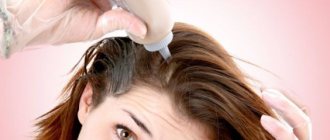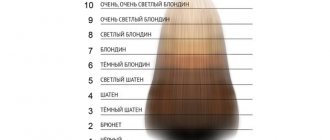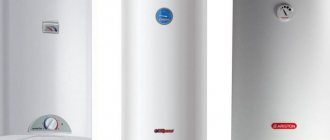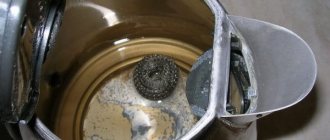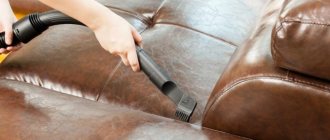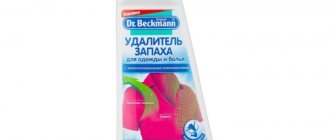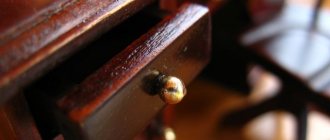Why do you need to clean your iron?
When used, a hair straightener heats up to very high temperatures and inevitably gets dirty over time. On its surface remain:
- remnants of cosmetics;
- medicinal oils and balms;
- minimal traces of shampoo;
- sebum from poorly washed hair.
Over time, the deposit becomes noticeable and turns into a full-fledged sticky layer on the iron plates. It prevents the device from heating evenly and reduces the effectiveness of straightening or curling. Some strands receive more heat than others, and the hair itself gets dirty during ironing.
A dirty iron catches and injures the strands, leading to split ends.
Periodic cleaning of the straightener helps to avoid all negative consequences. When caring for the device, you need to follow some rules so as not to damage the sensitive unit.
Why is cleaning necessary?
Before using a straightener, we often apply hairspray, foam, oils and other care products to our hair.
When hot plates slide over curls, residues of these products accumulate on them. Under the influence of high temperature, they literally stick to the surface of the iron. Also, sebum remains on it if you use the device not only after washing your hair. Over time, the sticky layer grows, making the coating on the build plates uneven. It is necessary to clean it to maintain the health of the curls, as well as to extend the life of the straightener. If this is not done, the following negative consequences are possible:
- uneven heating of the plates;
- damage to the working surface;
- lack of effect from leveling;
- overheating and split ends.
How to clean your hair straightening iron
Do not use aggressive agents to clean the iron, as they can damage the thin coating of the plates. But it is also pointless to treat the device with plain water, since it is not able to cope with greasy deposits.
Typically, several products are used to care for your straightener:
- Alcohol. The substance perfectly dissolves grease and does not harm ceramic or Teflon coatings.
- Lemon juice. The liquid has good cleaning properties and allows you to remove even thick deposits from the surface of the iron.
- Dishwashing liquid. Kitchen gels are designed specifically to combat fat. At the same time, to clean the iron you only need a tiny drop of product. There is no need to foam it generously, as when washing dishes.
- Gel for cleaning ceramic tiles. The product is intended for gentle care of sensitive surfaces and has a special formula that removes dirt without damaging the coating itself. As in the previous case, just a drop of gel is used for the straightener, which is rubbed with a napkin.
Advice! If it is heavily soiled, you can clean the hair straightener with a soft melamine sponge. But you cannot use it for processing every time, otherwise the plates will be damaged.
It is strictly forbidden to rinse the hair straightener under the tap or completely immerse it in a basin.
Stubborn stains
Washing with warm water using a terry cloth is the most gentle method, which eliminates the risk of damage to the surface. But how to clean when using water doesn't help? To do this, you can use a solution of alcohol in water, a weak soap solution, or an alcohol-containing glass cleaning liquid.
The cleaning process should be the same as in the previous case. Only after removing contaminants, you need to walk over the treated area with a damp towel soaked simply in clean warm water to remove any remaining alcohol.
Advice! Stubborn deposits on the device body itself can be removed with a cloth moistened with alcohol.
How to clean a hair straightener from carbon deposits, varnish and other contaminants
Regardless of the chosen product, you can clean a ceramic hair straightener using the following algorithm:
- The device is warmed up, unplugged and allowed to cool to a warm state. The plates should not be too hot or completely cold. However, it is prohibited to carry out any cleaning while the unit is on, as this may result in electric shock.
- A terry towel or cloth napkin is moistened in warm water. The material should be as soft and uniform as possible so that there are no scratches on the surfaces of the iron.
- Apply the selected cleaning agent to a towel or napkin, and then use one finger wrapped in a cloth to treat the open plates of the device. You can apply a little force to remove plaque, but you should not rub the surface too hard, as this may cause microscopic damage. To clean hard-to-reach areas in the corners and recesses of the iron, use a folded cosmetic disc or a cotton swab.
- The treated straightener is left to dry for a few minutes so that the applied product is absorbed into the dirt. After this, wipe the plates again with a clean, damp cloth to remove any remaining plaque.
- The rectifier housing is treated in the same way. With frequent use, greasy fingerprints and hair marks will also remain on it if the device is also used for curling.
After cleaning, the iron is left to sit for several hours in the switched off state until completely dry. You cannot put it back into work immediately after washing, much less use it for its intended purpose. Remaining moisture on the plates during evaporation will greatly damage the hair and the surface of the device itself.
Basic cleaning methods
There are several options to help deal with carbon deposits on the ironing plates and remove plaque.
Simple method
Cleaning a V-shaped curling iron is not so easy, but it can still be done. First, you need to warm up the device a little and unplug the cord from the outlet, and then get to work:
- A piece of terry cloth or a cotton swab should be soaked in warm water, wrapped around your finger and the plate should be cleaned of plaque.
- After rinsing the towel, you need to wipe the body of the iron and wait until it dries or dry it.
- To make the curling iron less dirty, after each straightening of the curls the device is moistened with water and the plates are cleaned of carbon deposits with alcohol.
They remove plaque from all parts of the device, although it is inconvenient to get to them.
Do not remove carbon deposits with your fingernails or a blade, as the surface of the straightener can be easily scratched.
Removing stubborn stains
Clean the curling iron from stuck mousse, foam, and varnish by wiping the body and each element of the iron with napkins containing alcohol. You can get rid of a thick layer of plaque by wetting the device with a soap solution. There is no need to put in much effort, as the paint will peel off easily.
Ceramic coating
Many women try to scrub away carbon deposits on their curling irons with cleaning products that scratch the surface of the hair straightener. Ironing plates are made not only of metal, but also of ceramics. The device should not be wiped with abrasive powders, but with a cloth soaked in heated water or soap solution.
How to clean a hair straightener
A standard hair straightener looks like a curling iron and has two smooth interlocking plates. The device can also be equipped with wavy attachments if it is also intended to be used for curling. Cleaning the plates of a hair straightener in such cases is the easiest way; in the process you only need to follow the basic rules.
It is much more difficult to remove plaque from the working surface of the straightening comb. Devices of this type are made in the form of a massage hair brush with numerous teeth. Each of them is a separate heating element with a thermal protective tip. During operation, the comb is simply moved through the hair, as with normal untangling of strands. In this case, the curls almost do not come into contact with heated surfaces, but they straighten well and receive virtually no harm.
Partially dense plaque from the straightening comb can be removed with an old toothbrush.
Contaminants appear on the teeth of an electric comb in the same way as on the surface of a flat iron. Cleaning is usually done in the following way:
- Heat the device to maximum temperature and turn it off from the network.
- Allow the straightener comb to cool until the teeth become just warm.
- Soak a cotton swab in an alcohol solution or lemon juice.
- One by one, carefully process the cloves and the space between them, cleaning out the accumulated plaque.
- After the procedure, the device is left to dry for several hours and only then put into operation.
When cleaning a comb-straightener, soap products cannot be used; they produce foam, which will then be almost impossible to completely remove from the treated surfaces. It is also prohibited to rinse the device under running water. Moisture will get on the electrical components, and the next time you turn on the device, it will burn out or cause an electric shock.
Advice! If you clean the straightening comb after each use, without waiting for heavy contamination, then you will have to spend less time on one procedure.
How not to do it
If you straighten dirty hair, greasy deposits quickly accumulate on the iron plates. Before the procedure, you must wash your hair. Wet curls cannot be straightened or curled, just as it is forbidden to use a wet iron.
It is dangerous to clean the appliance when it is not unplugged, as this may cause a short circuit. Abrasive products scratch the ceramic coating of the curling iron; under no circumstances should you remove carbon deposits with your fingernails, a knife or a blade.
The device must be heated to a certain temperature. It is recommended to straighten brittle and dry strands at 120–140 °C. To work with coarse and thick curls, the device can be heated to 200–220 °C.
Increasing the maximum parameters negatively affects the hair structure, split ends, strands become brittle and dull.
How often to clean your iron
Any straightener needs periodic cleaning. How often to perform the procedure depends on the intensity of use of the device:
- If the straightener is used for styling every day, then you need to remove plaque from its surface every time before processing clean hair. Otherwise, the curls will only get dirty after contact with the plates, which will damage their appearance and health.
- If you use the iron no more than twice a week, you are allowed to clean it once every two months. But at the same time, you need to monitor the actual condition of the device; if plaque accumulates faster, then it must be removed as it appears.
If the straightener is used 1-2 times a week, but the hair is additionally treated with oils, balms and varnishes, cleaning is carried out after every two uses of the iron. Any cosmetics, especially fat-based ones, very quickly contaminate the plates.
Titanium and Teflon irons require especially careful handling when cleaning.
Precautionary measures
Since the rectifier is an electrical appliance, precautions should be taken when cleaning it. This will protect you and your loved ones from injury.
Follow these rules:
- Under no circumstances should you begin cleaning the iron unless it is unplugged.
- Clean away from children and pets. Especially during heating.
- Do not immerse the device in cleaning solution. This is life-threatening and can completely damage the rectifier.
- Do not plug a wet iron into a power outlet.
Recommendations and precautions
Following several recommendations helps slow down the appearance of plaque on the surfaces of the iron:
- If possible, use a straightener on clean hair without any residue from hairspray or other cosmetics.
- The iron plates get less dirty when using high temperatures, since you have to run the device through the curls less.
- You need to straighten your hair after thoroughly combing it so that the strands come into contact with the heated surface evenly.
When cleaning, precautions must be taken. First of all, you cannot use certain products and materials to remove plaque. Namely:
- any cleaning and washing powders, they can leave scratches;
- metal blades, pins, paper clips and needles;
- abrasive iron scourers for dishes;
- bar soap.
It is also prohibited to use kerosene and gasoline to clean the iron. These are good solvents, but their microscopic residues on the surface of the plates can ignite during subsequent heating of the device.
The iron cannot be cleaned with acidic sanitary ware; they harm the coating of the plates.
Additional recommendations
In order for the device to serve for a long time, it is recommended to adhere to the following rules:
- do not clean with aggressive chemicals;
- Do not use sponges and brushes with abrasive surfaces;
- It is not recommended to rub with force;
- if you only style clean curls that are not coated with additional products, the device will remain clean longer;
- Do not operate a wet device;
- using a flat iron only at low temperatures will not help avoid the formation of carbon deposits, since in this case the device is passed through the strands more often and lingers on the curls longer;
- the process of using the iron can be disrupted not only due to contamination, but also due to improper use (for example, the strands are not combed first);
- It is not advisable to use products intended for other household appliances to clean the iron, for example, cleaning the soleplate of a regular iron;
- If the contamination of the plates is so persistent that it cannot be cleaned, you can ask for help from professional hairdressers who use special cleaning products.
Important! Cleaning a household appliance should be done away from children, taking all safety precautions.
By carrying out regular cleaning, you can not only extend the life of the device, but also make the process of styling your hair easy and convenient.
Every young lady dreams of looking elegant and impressive, but without a beautiful and fashionable hairstyle this is impossible. To create stylish looks, women buy curling irons and flat irons. The ceramic device helps to make straight and even curls out of curls, and to create a stylish hairstyle with protruding strands. How you clean your hair straightener determines whether the ends will split, the curls will straighten evenly, and how many years the device will work.
